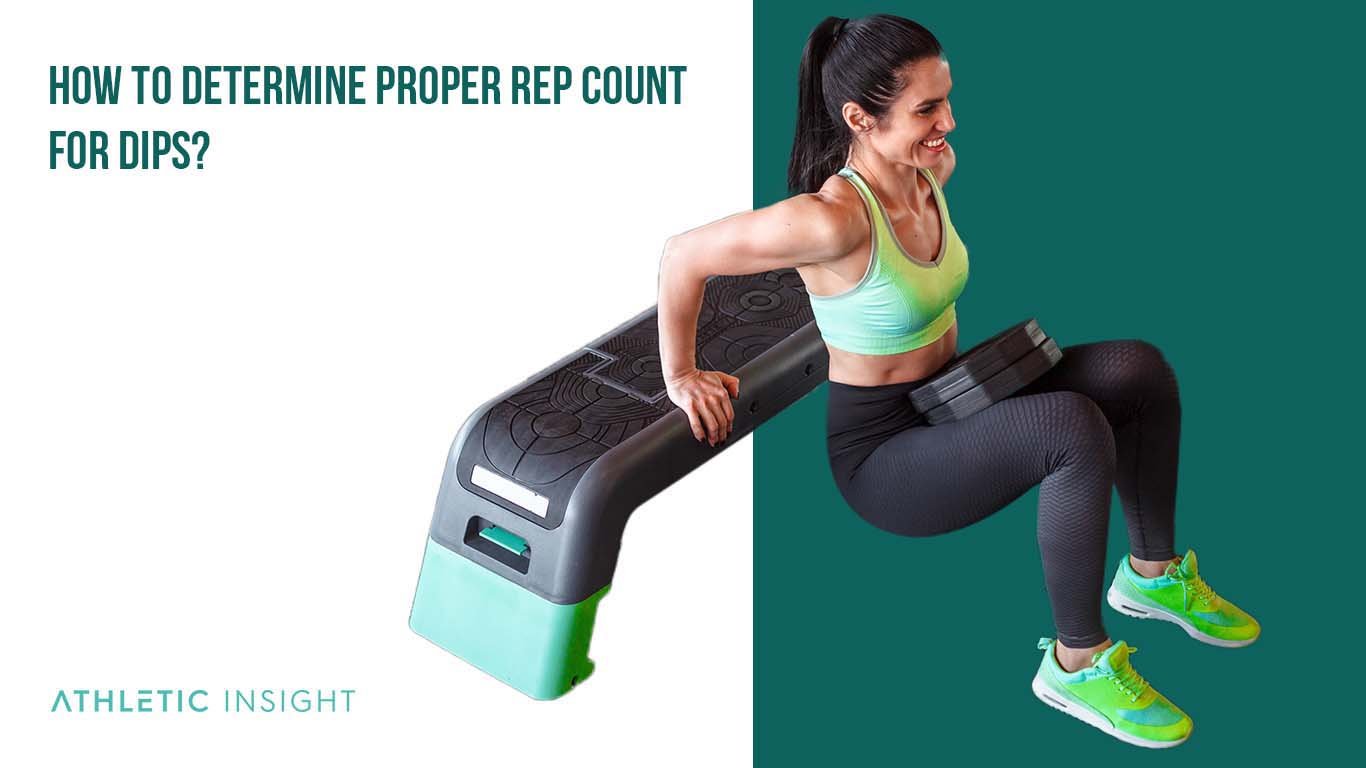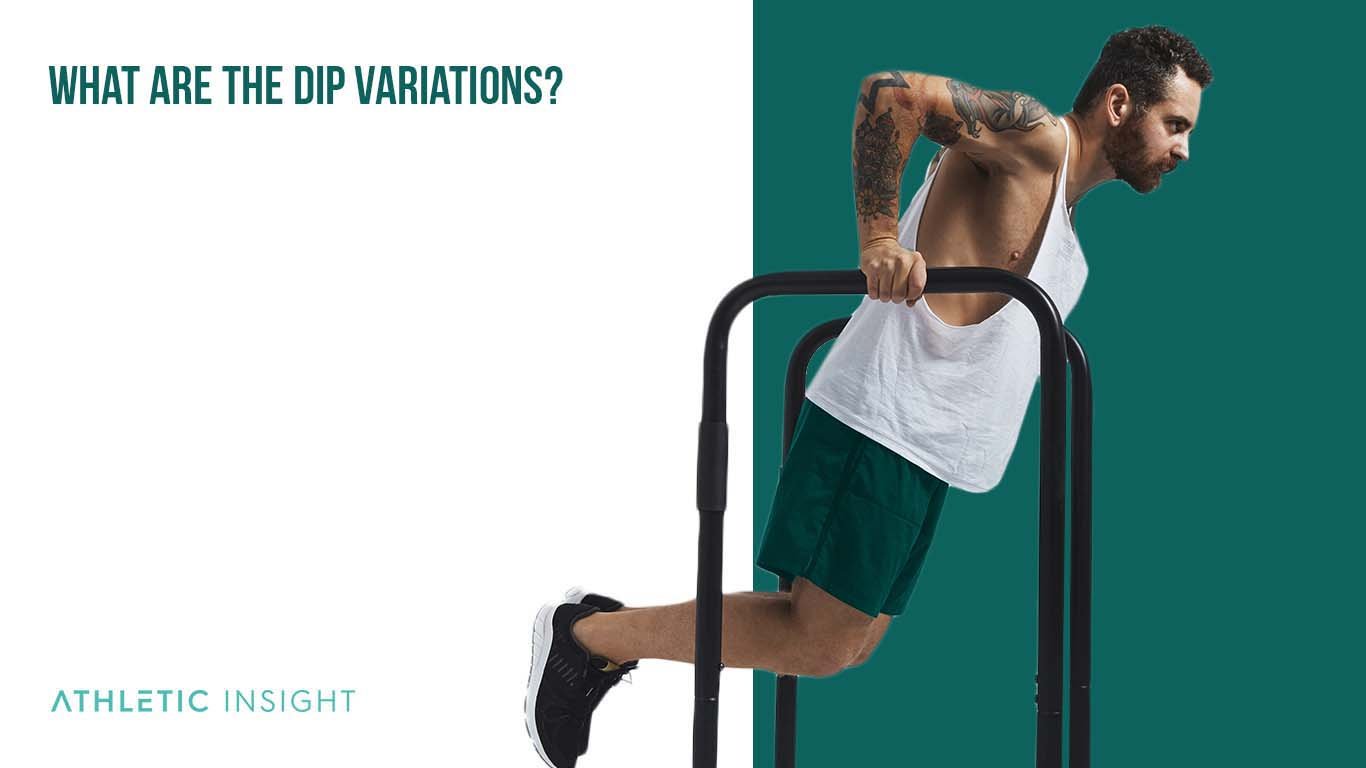A dip is a strength exercise for the upper body that primarily targets the pectoral and triceps muscles. Additionally, the shoulder and back muscles are major synergists. Dips have several benefits, key among them being strengthening the core muscles.
As the name suggests, the exercise involves pumping up and down on parallel bars, but there are about 20 variations that differ slightly. Key among them are the band-assisted, bench, and ring dips, which require parallel bars, benches, and rings, respectively.
While doing this exercise, it is important to work out with a proper form, especially by lowering at just the right level where the upper arm is parallel to the ground. Otherwise, you might experience injuries to the shoulder tendons and bursa.
Therefore, before getting right into the exercise, you need to master it. Here is a complete guide for the training, its variations, and techniques, so read on to learn more!
How To Perform Dips With Proper Form?
To dominate dips, you need to do it the right way. The form is all about preventing injury and these steps will assist you to perform dips with proper form.
- Grasp the parallel bars and jump up: You begin from the top so grab the bars and jump up.
- Keep your arms straight: Both arms should be stretched out as you get into position.
- Lean forward at a 45-degree angle: Lean forward to tuck your elbows at a 45-degree angle and keep the forearms vertical. It is safer for your shoulders.
- Bend at the waist: Bend to maintain balance while maintaining a natural arch. There should be a straight line from your shoulders to the knees when looking from the side.
- Lift your toes up toward your shins: Raise your toes to maintain the right posture.
- Pull your shoulders back and down: Raise your chest to lower the shoulders. If you let them roll forward, you might get hurt.
- Bend your elbows slowly into the dip: Get into action by bending your elbows to lower your body.
- Put the upper arms nearly parallel to the ground: Having the arms nearly parallel to the ground marks the end of the lowering step. Don’t go past that.
- Straighten your arms and raise your body to the beginning position: Raise your body to get back to the original position.
Maintaining this proper form helps you to work out efficiently while targeting the right muscle groups and preventing injury. While the dip is great for the triceps and back, it is one of the best chest exercises as well.
What Are the Benefits of Dips?
Performing dips regularly will give you these benefits.
- Muscle Definition: Dips activate a whole range of muscles in your body, so you will end up getting a firm, defined body.
- Muscle Tone: The exercise also makes these muscles grow and tighten.
- Increased Strength in Abdomen: Dips also involve your abs and the abdomen area when carrying out the full range of motion.
How to Determine Proper Rep Count for Dips?
Dips are hard to perform, so you can do 12 dips as a beginner while aiming for 20 as you advance. The most effective method is to split the reps into two or three sets. As you advance, aim for increasing the volume through more sets or increasing repetitions.

What Are The Mistakes For Dips Form?
Watch out for these common dips mistakes while performing the.
- Not Going Low Enough
- Going Too Low
- Moving Too Quickly
- Not Going All The Way To The Top
1. Not Going Low Enough
Doing partial reps that don’t reach the point of forming a 90° angle between the forearm and upper arm does not engage the triceps fully. Ensure your upper arm is parallel to the ground to avoid negating the benefits of the exercise.
2. Going Too Low
Going too low is also a mistake because it places too much pressure on the shoulders. A good dips form needs the upper arms to be nearly parallel to the ground.
3. Moving Too Quickly
Using momentum to lift and lower quickly does not give the maximum benefits for this exercise. The fast movement does not fully activate the triceps, so take it slow.
4. Not Going All The Way To The Top
One of the main functions of the triceps is to lock out your elbow, so if you don’t extend your arms fully, you are not giving your triceps a complete workout.
What Is the Importance Of Speed for the Dip Exercise Movement?
When dipping, go slow. As explained earlier, quick dips will not give you the full benefits of the exercise.

Throughout the process, you must have a full grip on the dip bars to prevent slipping. With your palm on the surface and your thumb around it, squeeze hard to keep your wrist from bending back. Make sure you grip the bars using your low palm, just like when you bench press.
Which Muscles Are Involved While Performing Dips?
The main parts activated when performing dips include the following.
- Pectoralis major muscles in the chest: Leaning forward and putting your chest forward put more focus on the pecs, toning them and sculpting your chest.
- Anterior deltoid, rhomboid, and pectoralis minor in the shoulders: The up and down range of motion requires support from the shoulders, so the anterior deltoid, rhomboid, and pectoralis minor get activated in the process.
- Lat muscles in the back: Abs and abdominal muscles help to stabilize your body throughout the entire range of motion, so expect them to firm up.
- Trapezius muscle in the upper back: Like the shoulders, the upper back muscles also provide support during the up-down movement and end up toning.
- Triceps: Dips mainly activate the triceps and are the most involved in the process.
What Are The Dip Challenges?
As stated earlier, dips are hard work, but you can decide to challenge yourself to do either multiple reps or a non-stop, timed set. Try these out.
- 100 Dips Challenge
- 50 Dips Per Day for 30 Days
- 3 Minutes Max Dips Challenge
100 Dips Challenge
You can split these 100 into ten reps per set or do as much as you can before burning out, then take a short break and resume until you finish.
50 Dips Per Day for 30 Days
The name says it all. Doing 50 dips per day is not that difficult, but the consistency of working on it for a month will lead to impressive results.
3 Minutes Max Dips Challenge
The 3-minute dip challenge focuses more on time, not the number of dips. How many can you do in that duration? Take the challenge.
What Are The Dip Variations?
You can tweak the dips to suit your preferences. The variations of dips include the following.

- Band-Assisted Dips: Band-assisted dips involve the use of a resistance band to help make the dips easier on a parallel bar or dipping station. The band loops around the bars and rests on your knees to help push you back up.
- Jumping Dips with Negatives: Lifting is the positive part of a dip, and the negative cycle is the descent. Therefore, jumping dips with negatives involves lowering your body slowly as you fight the descent speed. Once you hit the lowest position, use your legs to jump to the top and repeat.
- Bench Dips: As the name suggests, bench dips require at least one bench on which you lift and lower yourself while holding at the edge.
- Assisted Dip Machine: An assisted dip machine helps you do your exercise when you run out of energy. It has a platform for holding your knees or feet and uses a counterbalance to provide a level of assistance that matches the weight you set on it.
- Weighted Dips: If you feel like your body weight is not enough, try out the weighted dip by carrying extra kilos. To do this, wear a dip belt around your waist with the weight (plates) hanging on a chain. Alternatively, you can hold a dumbbell between your feet, but this is only possible with small weights to avoid injury.
- Band-resisted Dips: Band-resisted dips are the opposite of the assisted variation and can work as alternatives to weighted dips. To achieve this, wrap the band around the bars, then rest it on your neck and shoulders. It might be easy going down, but the band will resist the lift, just like having weights.
- Weighted Bench Dips: We have looked at the bench dip earlier. The weighted bench dip adds a weight variable into the equation to make the exercise more challenging. You might need two benches to keep your feet elevated to hold the weight, although using a single one is still possible.
- Dip with Leg Raise: You can make life a bit difficult for your core muscles by doing a dip with leg raise. Lift your legs slowly at the end of the dip until they are parallel to the ground. Hold them at the raised position for about one second, then lower them slowly before beginning the next dip cycle.
- Side-to-Side Dips: A side-to-side dip involves twisting your body at the hip section and then doing a full dip before alternating to turning your hips to the other side.
- Ring Dips: Most people use parallel bars for this exercise, but ring dips require gymnastic rings suspended from the roof/ceiling. The routine is more challenging than the bars type because you have to use more strength to keep the unstable rings from spreading out. Only pros should try ring dips because they can cause serious injury, especially on the shoulder’s rotator cuff muscles.
- Bulgarian Dips: The Bulgarian dip is similar to the ring dip because it requires rings suspended from the roof/ceiling but targets more muscle groups.
- Korean Dips: A dipping bar and chalk will come in handy when doing a Korean dip. Use one of the bars and place your palms facing forward. Next, lower your body, pause a little bit at the bottom, then push back up in the positive cycle and pause a bit at the top. Make sure to maintain a banana posture through the negative and positive cycles so that your body goes through the bar.
- Pronated Grip Dips: Pronated means palm facing backward, so pronated grip dips are regular dips, but with your arms positioned this way on the bar.
- Supinated Grip Dips: Supinated is the opposite of pronated, so a supinated grip dip involves doing the exercise with your palms facing forward. Try switching between pronated and supinated dips to trick your body into never getting comfortable with one variation.
- Gironda Dips: Instead of parallel bars or rings, a Gironda dip requires a wide V bar and a posture that slightly rounds your back while bringing your legs forward to a point where you can see them.
- Reverse Grip Gironda Dips: In the regular Gironda dip, the forearms point inwards, but with the reverse grip Gironda dip, they face outwards while the knuckles face your upper body.
- Wall Dips: If you have watched parkour videos, you have seen a wall dip in action as they climb up and drop from walls. Wall dips involve positioning your chest over a wall and then doing a pseudo-push-up. You can also try facing away from the wall to do the reverse wall dip.
- Elbow Dips/Russian Dips: A Russian dip takes it up a notch by requiring you to drop your elbows to the surface your hands are gripping. At the lowest point, your forearms should lie flat on the surface.
- Planche Dips: Planche dips are advanced workouts that require you to planche your body while holding the parallel bars, then lift and lower your entire weight while at that angle.
- One Arm Dips: If you have exceptional body strength and control, try dipping using one hand. A parallel bar is best for trying out one arm dips, and you need to place your working arm between your body.
What Are The World Records for Dips?
If you have tried the challenges, how many dips did you manage? Some people take this exercise seriously and have achieved outrageous records. Check this out.
Women Dip Records: There is no official record of tricep dips for women.
Men Dip Records: According to the Guinness World Records, the most tricep dips in a minute in the men’s category is 119. Stephen Buttler, a UK citizen from Morda, Shropshire, holds the record and achieved it on 17th November 2011.
What Are The Dip Related Facts?
Here are a few things you should know about dips.
- They are superior to push-ups: The fact that you lift your entire body weight when doing dips gives a more intense workout. With push ups, you only lift a portion of your weight.
- Boosts bench press: Dips activate and grow the triceps, which are critical when doing a bench press. Incorporating them into your routine will boost your bench, allowing you to do more.
- Muscle fiber firing: Dips and other exercises that require you to move your body through space instead of being stationary result in stronger muscle fiber firing.
- You don’t need a gym: If you are not in a position to go to the gym, dips might just be enough because they activate multiple muscle groups. You only need to find two sturdy bars placed at the same height
Do Dips Affect the Hormones?
Exercising, which includes doing dips, does increase hormonal secretion. The released hormones include prolactin, growth hormone, TSH (Thyroid Stimulating Hormone), FSH (Follicle Stimulating Hormone), cortisol, luteinizing hormone, and testosterone.
Do Dips Increase Testosterone?
Yes, dips increase testosterone levels. Testosterone is the male sex hormone responsible for sexual functions and development. Physical activities like dips increase testosterone levels, especially in obese and overweight men. Increased testosterone has several benefits, such as faster muscle building, stronger bones, and better libido.
Do Dips Affect the Mood?
Yes, dips can affect mood. One of the key benefits of raising testosterone at least to balance the hormone levels in the body is maintaining or improving mood. Testosterone levels tend to start lowering after 40 years in men, and doing dips can help raise the hormone to a perfect balance.
Are Dips Practiced Within CrossFit?
Yes, CrossFit includes dips in their workout routines, specifically the ring dip.
Are Dips A Military Movement?
No, dips are not a military movement. Dips are upper body exercises that can be part of military training but are not a movement.
Are Dips Dangerous?
Dips can be dangerous, but it depends on the variant. Some variations, like the ring, one arm, and planche dips, can be dangerous because they require incredible balance. The rest are not that dangerous but can injure your body if not done correctly.
Are Dips Push or Pull?
Dips are a push movement. Since dips are a pushing exercise, combining it with pulling exercises, like chest-to-bar pull-ups, is better for a full-body workout.
Are Dips Essential?
Dips exercises are not essential but are one of the best workouts for growing upper body strength.
Are Dips An Olympic Lift?
No, dips are not part of the games, but Olympic lifters do the exercise regularly to develop balance while maintaining better shoulder stability, health & mobility.
Are Dips A Compound Exercise?
Yes, dips are a compound exercise because it engages multiple muscles on the arms, shoulder, back, and chest.
What Can Replace Dips?
Thirteen exercises engage the same or almost the same muscles as dips, so they are viable alternatives. These are as follows.
- Decline bench press
- Cable chest flys
- Cable press
- Bench press
- Banded chest press
- Dumbbell push-ups
- Dumbbell bench press
- Neutral grip dumbbell press
- EZ bar bench press
- Isolateral chest press
- Close grip bench press
- Diamond push-ups
- Plate pinch push
Are Dips Effective As A Calorie Burner Exercise?
Yes, dips are an effective calorie-burning exercise. You can burn up to 10 calories per set doing a bench dip, which activates the same muscles as the regular dip.
How Many Calories Can be Burned While Doing Dips?
It depends on the time and number of reps. As stated above, you can burn up to 10 calories per set. Doing a 3-minute routine daily for a week can burn 100 calories.



